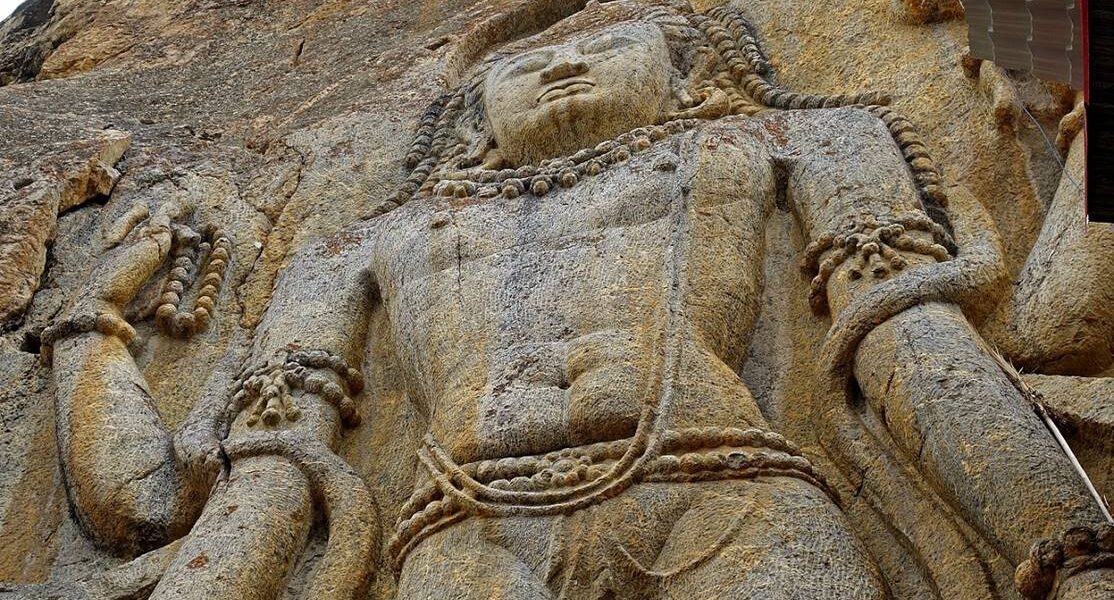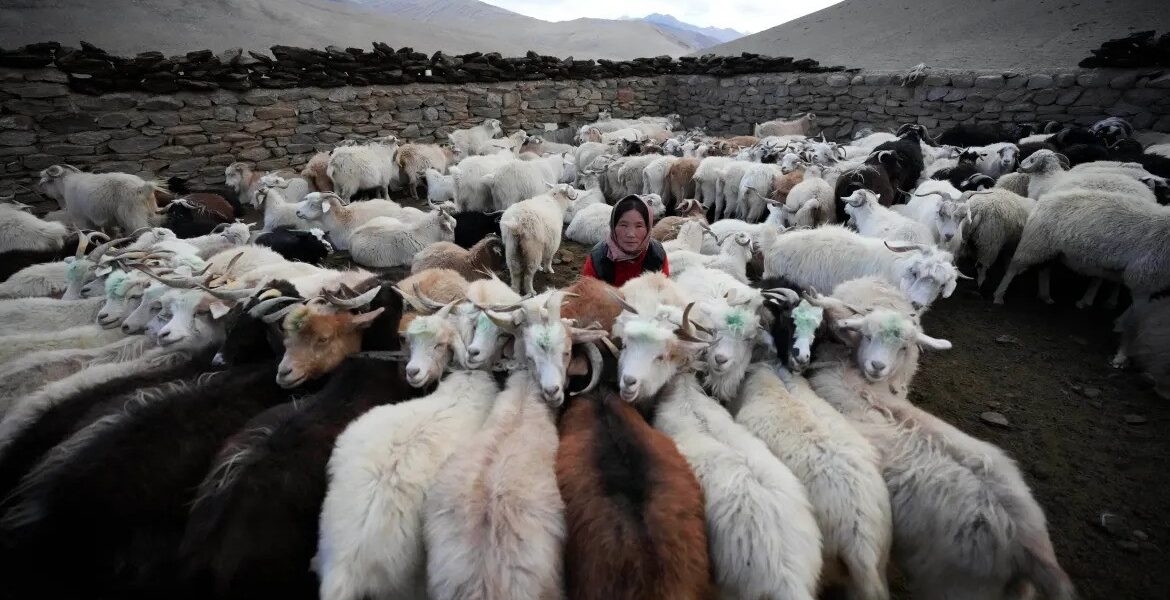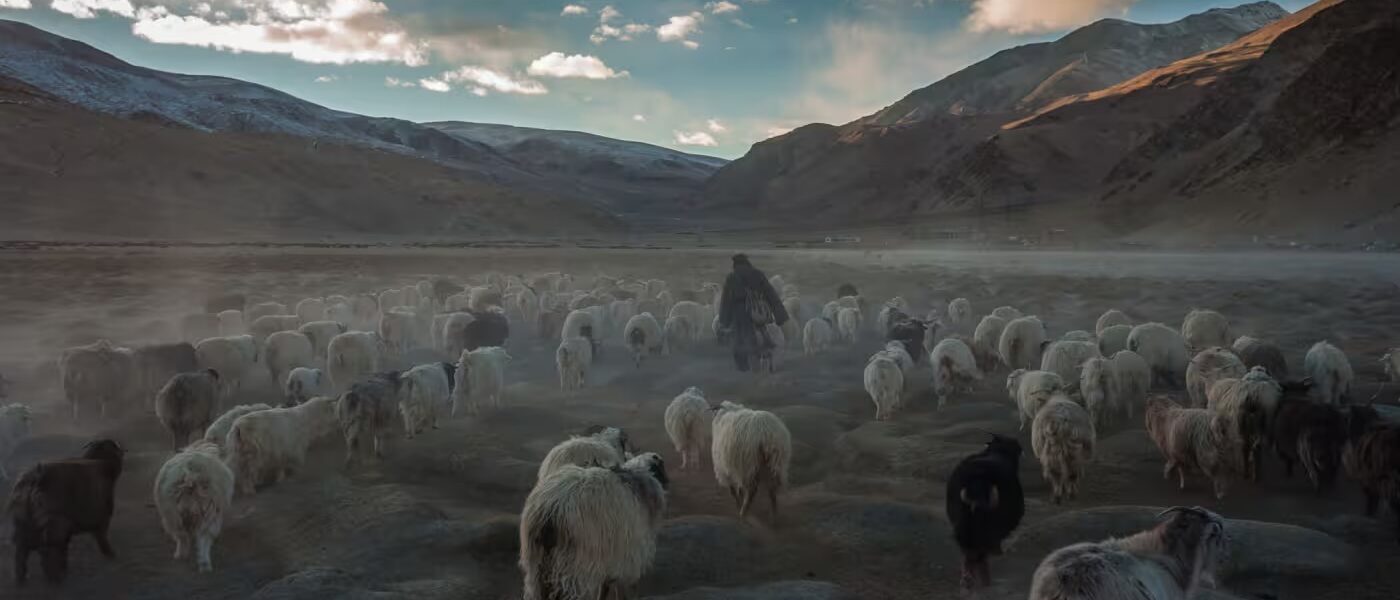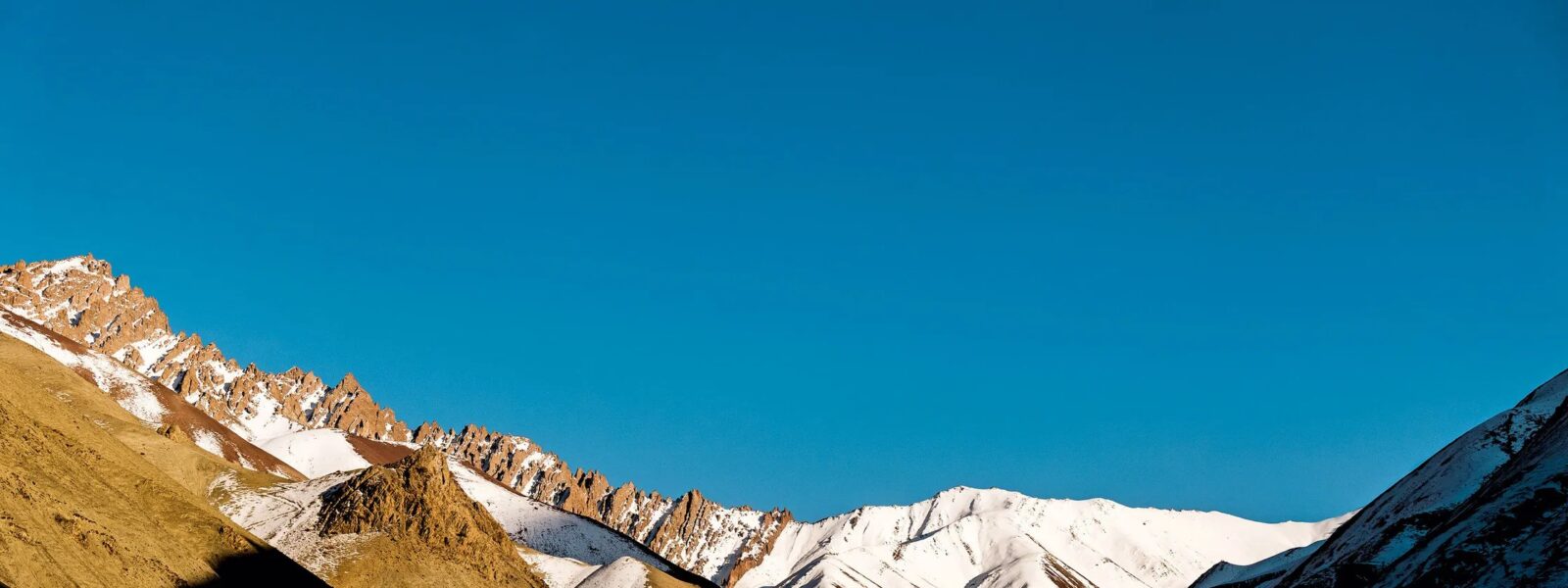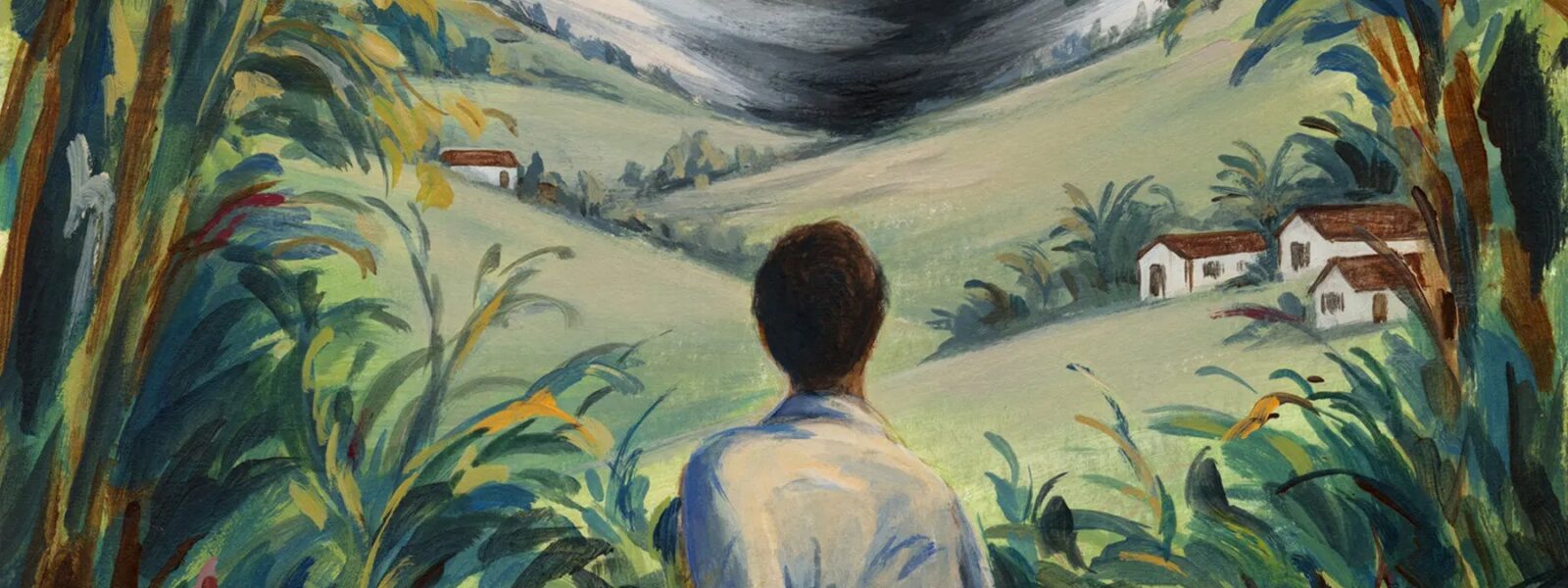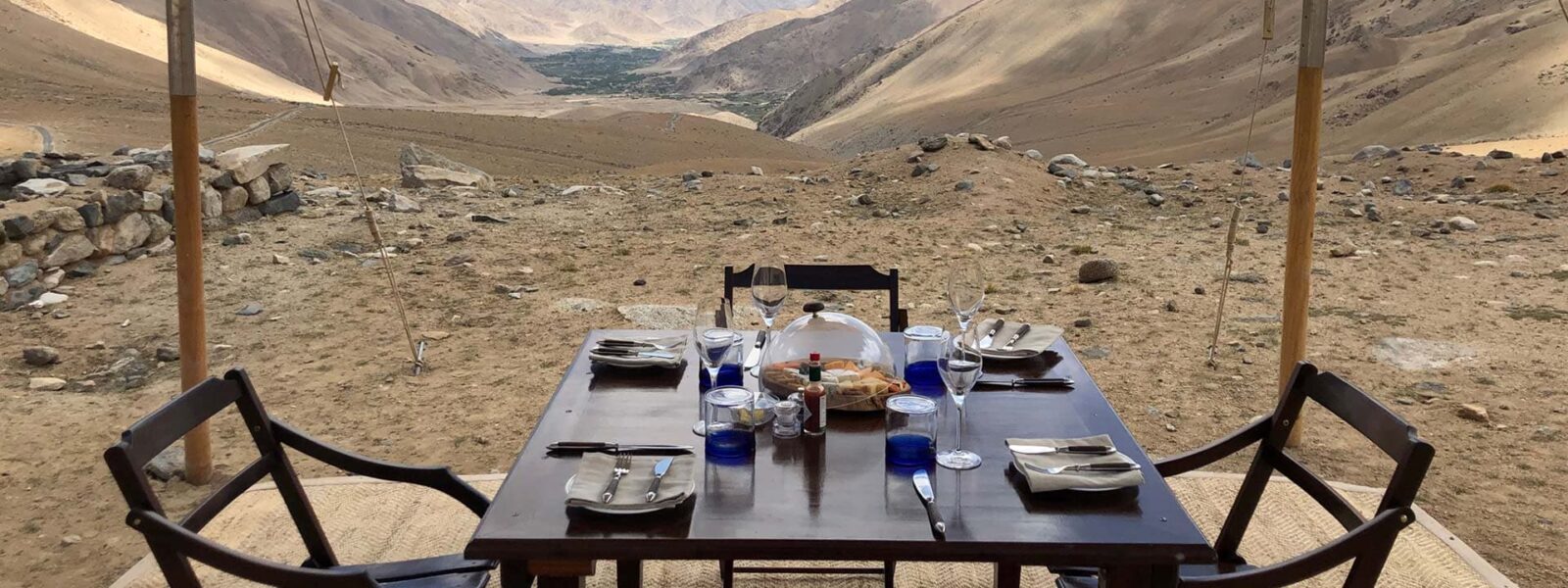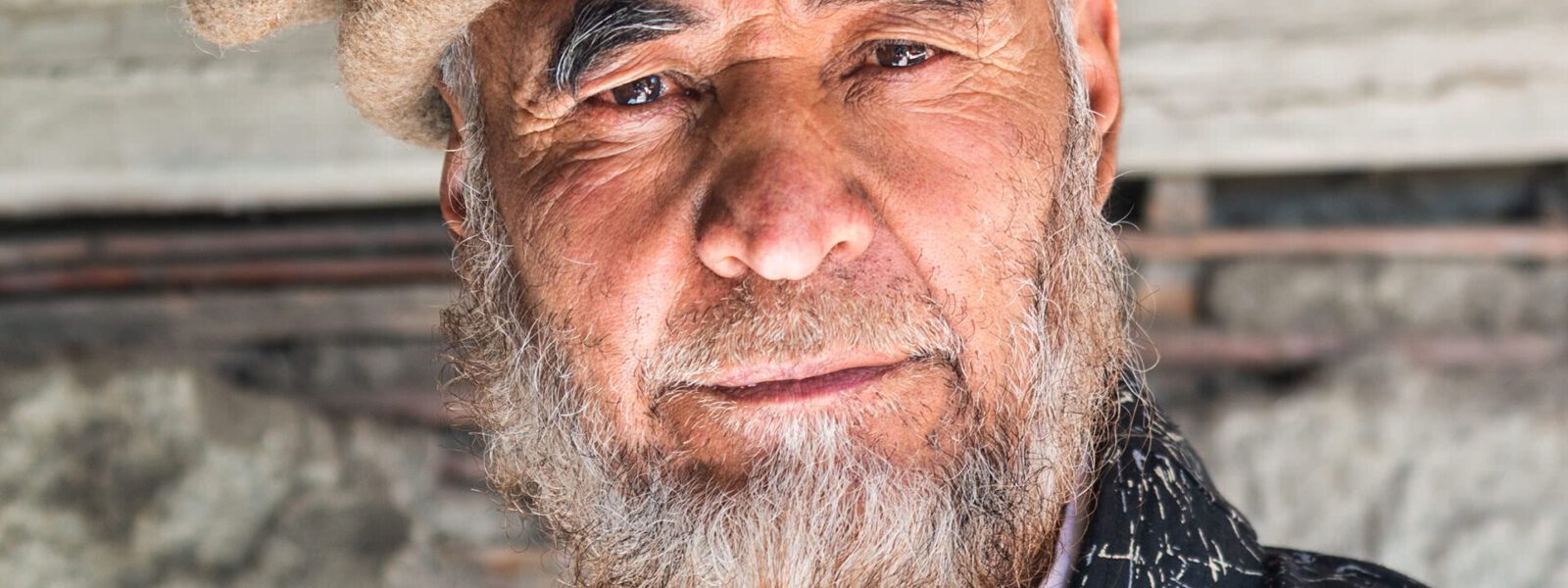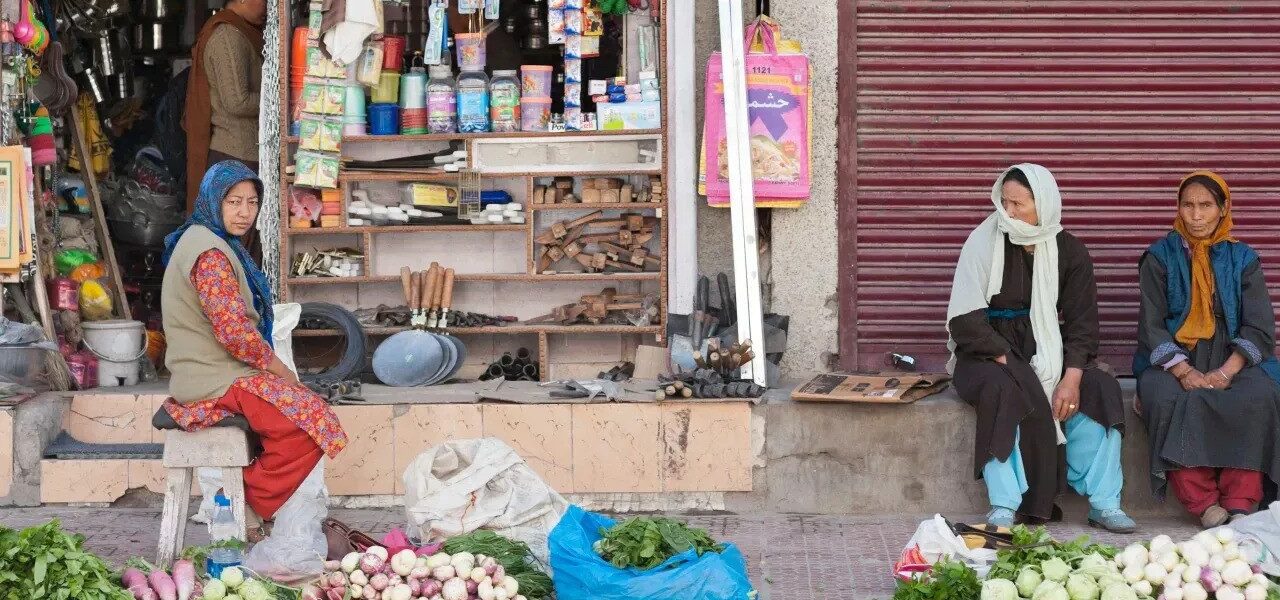📍 Where is Mulbekh Village Located?
Tucked away in the heart of western Ladakh, Mulbekh Village is one of those rare roadside gems that travelers often pass without realizing its profound cultural significance. Located strategically along the Leh–Kargil highway (NH1D), Mulbekh is about 190 kilometers from Leh and roughly 45 kilometers east of Kargil. It marks a fascinating transition zone where Tibetan Buddhist culture mingles with the Muslim-influenced heritage of Kargil, offering a vivid tapestry of beliefs, art, and landscapes in a single location.
Surrounded by jagged peaks, rock cliffs, and chortens wrapped in prayer flags, Mulbekh is easily accessible by road. Whether you’re traveling from Leh toward Zanskar or en route to Srinagar, the village offers a natural stopover point—and an unexpectedly spiritual one at that. The highway cuts through the heart of the village, making it an ideal break on a long journey, especially for those interested in ancient Buddhist relics, cliffside monasteries, and untamed Himalayan terrain.
The altitude of Mulbekh is approximately 3,300 meters (10,827 feet), which means the air is thin and crisp, especially in the mornings and evenings. This high-altitude setting is important for visitors to note: proper acclimatization is essential if you’re coming straight from lower regions like Srinagar or Manali. Still, for most seasoned Ladakh travelers, Mulbekh offers a peaceful and easy stop, far removed from the bustling tourist centers of Leh or Nubra Valley.
One of the most remarkable aspects of Mulbekh is its location at the cultural crossroads of Ladakh. While Leh is dominated by Tibetan Buddhism and Kargil by Shia Islam, Mulbekh rests in a middle ground where these identities coexist, and where a giant Maitreya Buddha carved in stone gazes down from a rocky cliff onto the highway below. This makes the village not only visually stunning but also historically and spiritually rich.
For travelers seeking offbeat destinations in Ladakh, Mulbekh represents the perfect blend of accessibility and authenticity. It’s close enough to be reached by any vehicle, yet far enough from the tourist trail to preserve its traditional lifestyle. Visitors are greeted by warm locals, a few small guesthouses, and the serene presence of Buddhist monks residing in the hilltop gompas.
So, whether you’re a spiritual seeker, a cultural explorer, or a photographer in search of the perfect roadside vista, Mulbekh offers a powerful first impression of Ladakh’s lesser-known beauty. It’s a place where stories are etched in stone—quite literally—and where the road winds quietly beneath the gaze of a Buddha who has waited centuries to be seen.
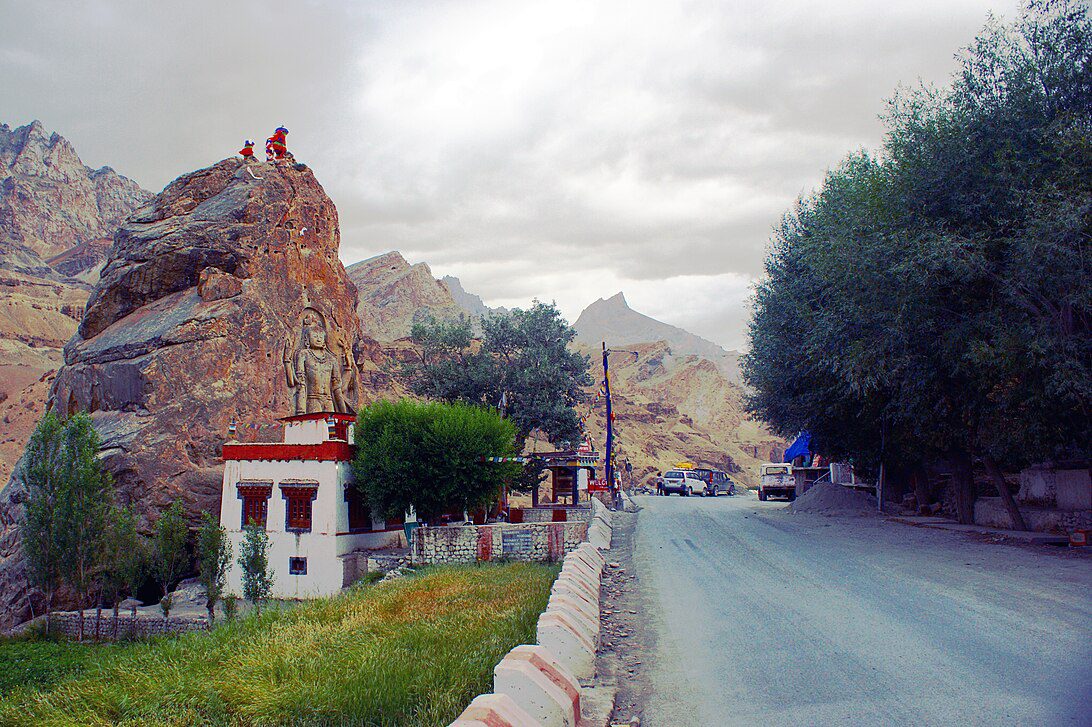
🕉️ The Giant Maitreya Buddha of Mulbekh
One of the most iconic landmarks on the Leh–Kargil route, the Maitreya Buddha of Mulbekh is not just a roadside attraction—it is a marvel of spiritual artistry and Himalayan heritage. Towering nearly 9 meters high, this rock-carved statue of the future Buddha gazes serenely over the highway, its expression frozen in time for over a thousand years. Set against the raw cliffs of the Zanskar Range, the statue embodies a fusion of art, faith, and rugged landscape that few visitors expect to find in such an isolated stretch of road.
Known locally as the Mulbekh Chamba, the statue is believed to date back to the 8th century, though some scholars argue for a slightly later period. What sets it apart is not only its sheer scale but the rare artistic style—an intricate blend of Gandhara influences from ancient northwest India and early Tibetan Buddhist iconography. This blend suggests that Mulbekh was once a crossroads of cultures, a stopping point for monks and travelers along the trans-Himalayan trade routes that connected India with Central Asia and beyond.
Carved directly into a vertical rock face, the Maitreya is depicted standing, with both hands held in symbolic gestures known as mudras. The right hand is raised in the gesture of reassurance (abhaya mudra), while the left holds a small water pot, symbolizing the future Buddha’s role as a bringer of peace and renewal. Despite centuries of exposure to the elements, the details of the carving—especially the face and folds of the robe—remain remarkably well preserved, testifying to the craftsmanship of the ancient sculptors.
The statue’s spiritual significance lies in its association with the prophecy of the future Buddha. In Buddhist belief, Maitreya is the successor to the historical Buddha (Shakyamuni) and is destined to appear on earth during a time of moral decline, to restore dharma and reawaken enlightenment in humanity. That such a figure is carved so prominently on the cliffside in Mulbekh reflects the deep spiritual aspirations of the local community—and perhaps their hope for divine presence in an unforgiving land.
From an architectural and historical perspective, the Mulbekh Maitreya is one of the few surviving examples of pre-Tibetan Buddhist rock carvings in Ladakh. Unlike the painted monasteries of Hemis or Thiksey, this statue is not hidden within a structure. It stands openly, carved into living stone, exposed to the skies. That openness only adds to its impact. There are no gates, no ticket counters—just a small prayer room beside it, where butter lamps flicker quietly in the wind.
Travelers often pause here for a short break—perhaps to snap a few photos, light a butter lamp, or simply sit in silence under the Maitreya’s gaze. But those who linger a little longer will feel something deeper: the timeless stillness of devotion, the weight of a thousand years of prayer, and the reminder that even in the most remote corners of the world, beauty and wisdom endure.
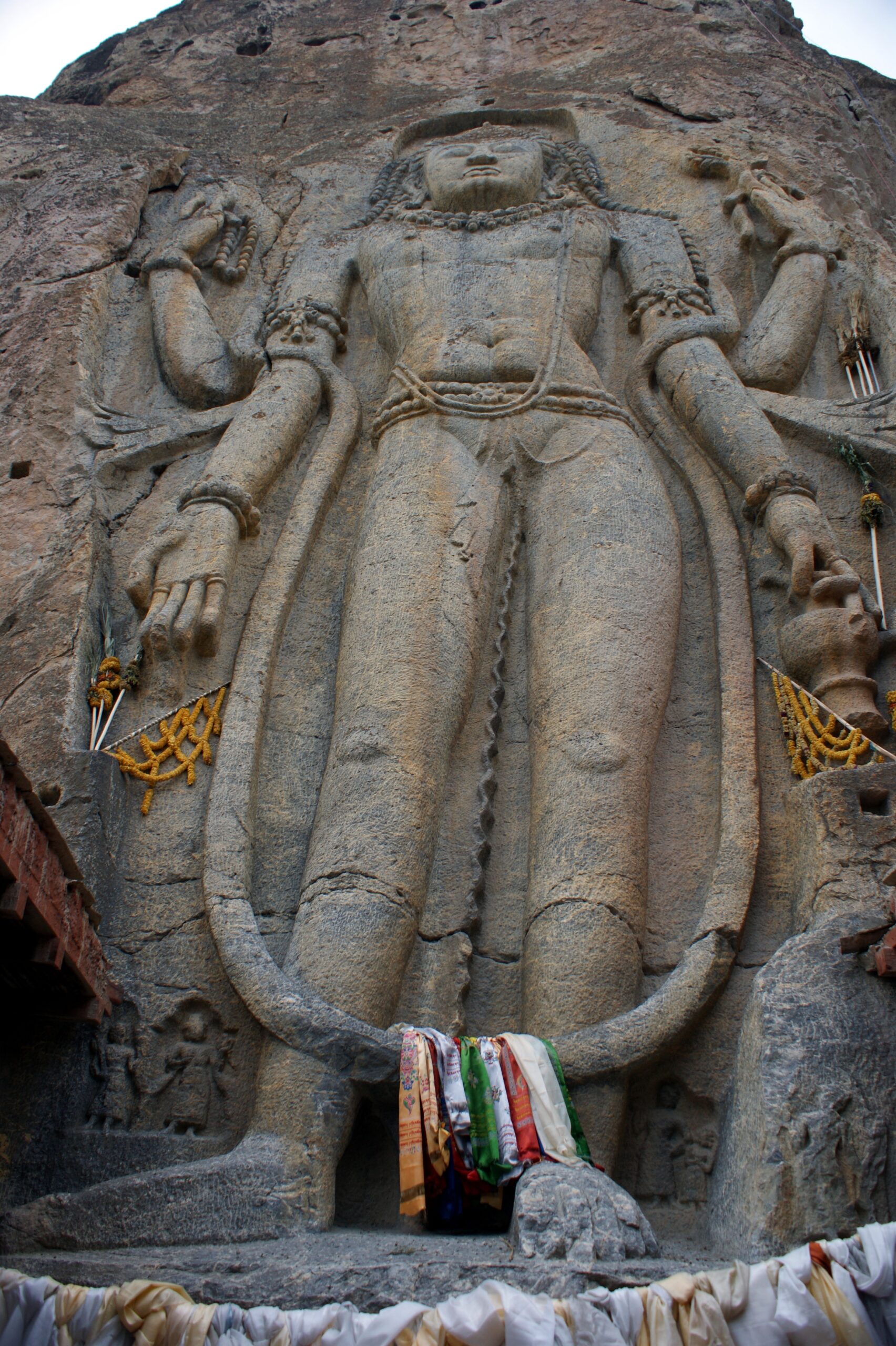
🏔️ Exploring Mulbekh’s Hilltop Monasteries
While the Giant Maitreya Buddha may be the first thing travelers notice in Mulbekh, the village’s true spiritual heartbeat lies just above—perched quietly on the hillsides, gazing across the valley. Mulbekh’s hilltop monasteries may not be as grand as Hemis or Thiksey, but what they lack in size, they make up for in authenticity, atmosphere, and cultural richness. These sacred sites serve as active centers of prayer, learning, and community for local monks and villagers alike.
Mulbekh is home to two main gompas, each representing a different school of Tibetan Buddhism. The first is a Drukpa Kagyu monastery, and the second belongs to the Gelugpa order, often referred to as the “Yellow Hat” sect. This coexistence of different Buddhist traditions within the same small village is rare, even in Ladakh, and highlights the open and tolerant spiritual atmosphere of the region. Climbing up the winding paths to these monasteries rewards visitors with sweeping views, fluttering prayer flags, and a sense of peace that seems to emanate from the stones themselves.
The Drukpa monastery, set slightly higher up, is the older of the two. With its whitewashed walls, faded murals, and smoke-darkened prayer halls, it exudes a sense of deep time. Inside, visitors will find ancient thangkas (Tibetan Buddhist paintings), weathered statues, and butter lamps that have likely burned continuously for generations. A handful of monks live here, maintaining the daily rituals and chants that link the present to the spiritual legacy of the past.
The Gelugpa monastery, although smaller, is equally fascinating. This gompa is often visited by villagers during major religious festivals and ceremonies. Its modest prayer hall is adorned with statues of Tsongkhapa—the founder of the Gelug school—and Avalokiteshvara, the bodhisattva of compassion. From its rooftop, you can gaze down at the village rooftops, barley fields, and the occasional caravan of yaks passing by on the road below. It is a perfect place for quiet reflection or a meditative pause before resuming your journey.
Perhaps what makes these monasteries so special is their ongoing role in local life. These aren’t frozen museum relics; they’re living institutions. Young boys are still sent here to train as monks. Families gather here to seek blessings before harvest or after childbirth. On special days, the sound of horns and chanting can be heard drifting down into the valley as villagers ascend to join in the celebrations. There’s a rhythm to life here, marked by the moon calendar and the teachings of the Dharma.
For travelers seeking authentic Buddhist experiences in Ladakh, visiting Mulbekh’s hilltop monasteries offers a window into everyday spirituality. There are no crowds, no entrance fees, and no commercialization—only silence, sky, and the ever-present scent of incense and stone. It is here, more than anywhere else in the village, that you’ll feel the heartbeat of Ladakh’s spiritual soul.
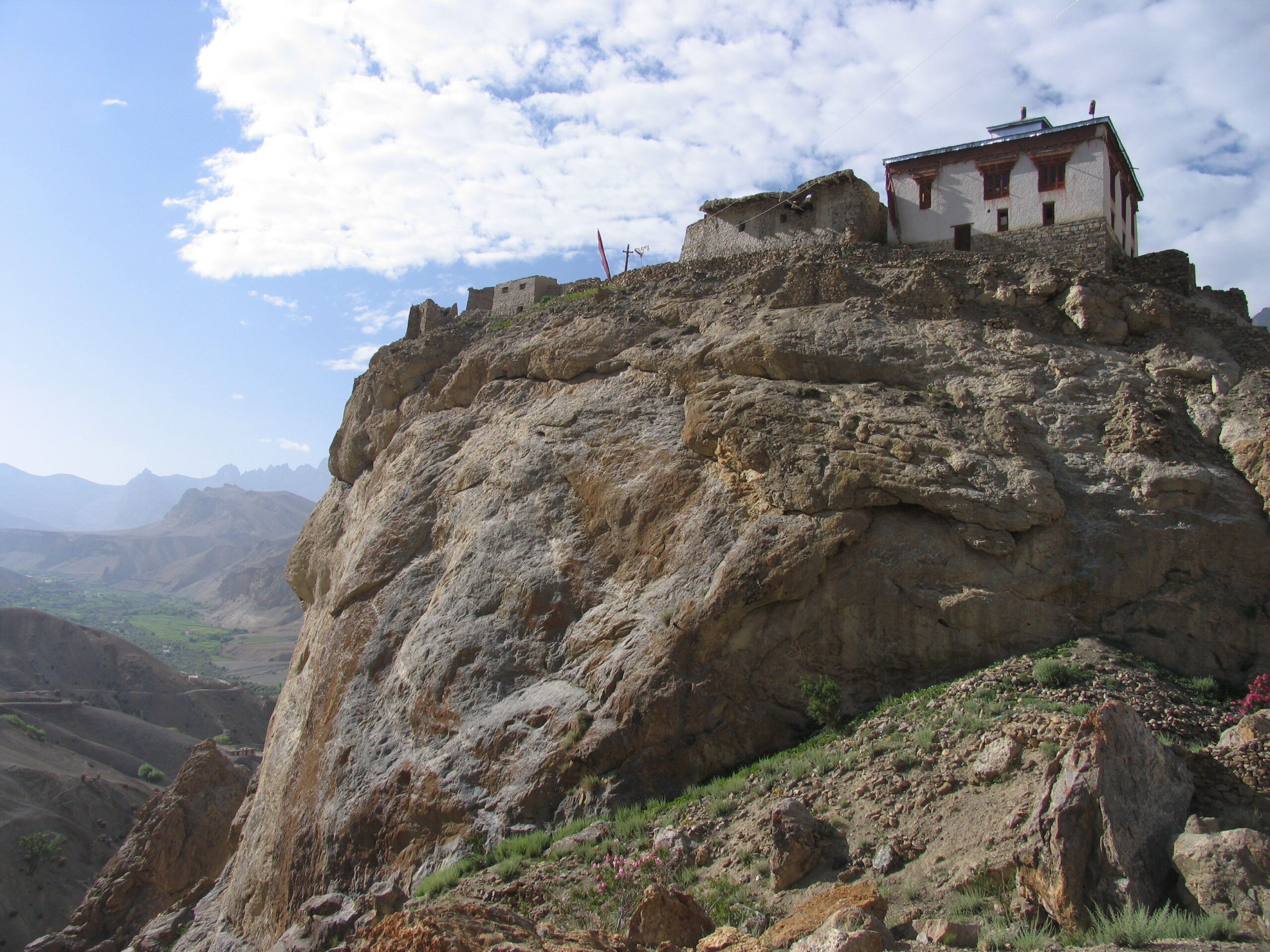
📸 What to See and Do in Mulbekh Village
Though often considered a brief stopover on the Leh–Kargil highway, Mulbekh Village offers far more than a roadside photo opportunity. For travelers willing to spend a little more time here, the village reveals a rich tapestry of spiritual landmarks, traditional life, and scenic beauty—all wrapped in a serene, unhurried atmosphere that encourages deep observation.
The most obvious highlight is, of course, the Giant Maitreya Buddha, a majestic rock carving that demands admiration. But beyond this iconic landmark, there are many subtle treasures waiting to be discovered. Begin your exploration with a slow walk through the village lanes, where whitewashed mud houses line narrow paths and children play under fluttering prayer flags. This is Ladakhi life, unfiltered and real.
Photographers will find plenty of subjects here. The contrast of golden barley fields against red rock cliffs, the wrinkled faces of elderly villagers wrapped in traditional Gonchas, and the light falling on the Maitreya carving during sunrise or sunset—all make Mulbekh a surprisingly rich destination for visual storytelling. Don’t miss capturing the view from the hilltop monasteries either, where the valley below unfolds like a miniature world in motion.
For those interested in cultural immersion, Mulbekh offers a genuine connection to Ladakhi heritage. You can visit local households (with permission), enjoy a cup of salted butter tea, and perhaps even be invited to share a bowl of thukpa (noodle soup) during lunch. Small gestures like these provide insight into the rhythms of village life—and are often the moments that travelers remember most vividly.
The village also hosts occasional religious festivals and prayer ceremonies, particularly during the summer months. These events, while not always advertised, offer an unforgettable experience for visitors lucky enough to be present. Monks don ceremonial robes, drums echo through the valley, and villagers gather in vibrant traditional attire to celebrate and offer prayers.
Finally, Mulbekh serves as a natural base for exploring nearby hidden sites. Short hikes can take you to secluded chortens, meditation caves, and lesser-known rock carvings dotted around the landscape. For those with a bit more time and curiosity, a local guide can offer deeper context and take you off the beaten path.
Whether you’re here for photography, spirituality, or authentic village life, Mulbekh rewards those who pause. It’s a place that whispers rather than shouts—where the past lives on in stone, prayer, and the quiet generosity of its people.
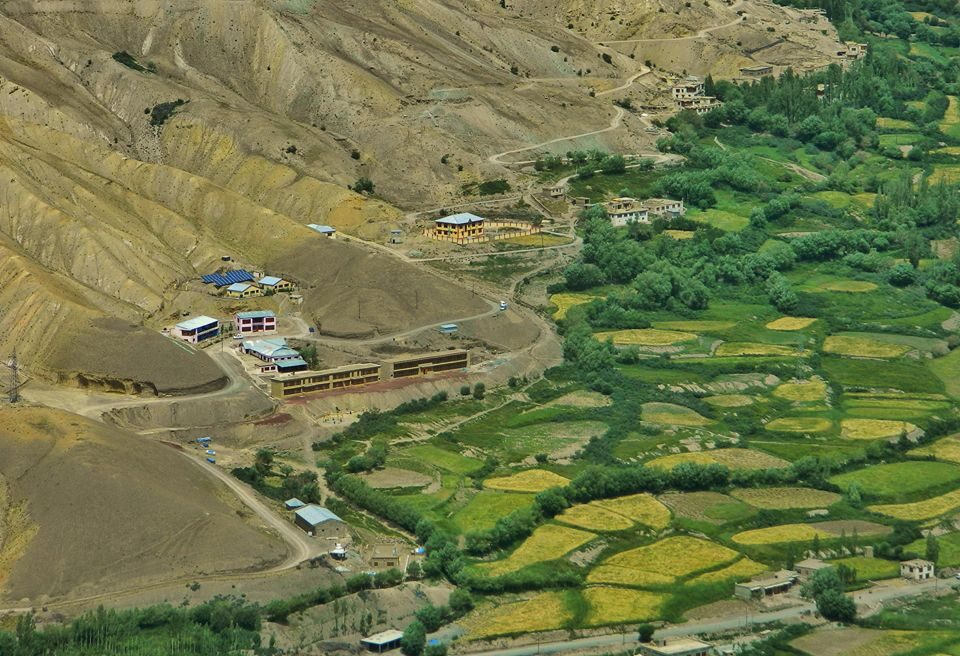
🛣️ Travel Tips for Visiting Mulbekh
Planning a visit to Mulbekh Village requires just a little preparation—but it can significantly enhance your experience in this peaceful corner of Ladakh. Whether you’re stopping briefly on your way between Leh and Kargil, or planning an overnight stay, here are some practical travel tips to make the most of your journey.
How to get there: Mulbekh is located directly on National Highway 1D, approximately 190 kilometers from Leh and 45 kilometers from Kargil. It is accessible year-round, though the ideal travel season is between May and October. Buses and shared taxis run between Leh and Kargil daily, and Mulbekh is a regular stop. If you’re self-driving or hiring a private vehicle, plan for a scenic journey of around 5–6 hours from Leh, or just 1–1.5 hours from Kargil, depending on road conditions.
Altitude & Acclimatization: Sitting at an altitude of around 3,300 meters (10,800 feet), Mulbekh is considered moderately high. If you’re arriving from lower regions like Srinagar or Manali, make sure to give your body time to adjust to the thinner air. Avoid strenuous activity on your first day and drink plenty of water.
Accommodation options: While Mulbekh is a small village, a few guesthouses and homestays are available along the highway. These offer basic but comfortable lodging, warm blankets, and home-cooked Ladakhi meals. Booking in advance is not usually necessary unless you’re traveling during a festival. If you’re looking for more upscale options, staying in Kargil and making a day trip to Mulbekh is a good alternative.
Best time to visit: The most pleasant time to visit Mulbekh is from late May to early October. During this window, roads are open, the skies are clear, and the village comes alive with green fields and flowing streams. The shoulder seasons of May and September offer fewer tourists and quieter experiences. Winter travel is possible, but expect frigid conditions and minimal services.
What to bring: As with all high-altitude travel in Ladakh, pack layers. Bring warm clothing, a sun hat, sunscreen, lip balm, and a reusable water bottle. Also, consider carrying cash, as there are no ATMs or digital payment systems in the village. Respectful attire is encouraged when visiting religious sites.
Local etiquette: Greet locals with a smile or a simple “Jullay,” the universal Ladakhi greeting. Ask for permission before photographing people, especially monks or children. When entering monasteries, remove your shoes and keep a respectful silence. Refrain from touching religious artifacts unless invited.
Mulbekh may be a small dot on the map, but with these tips in hand, your visit can be deeply rewarding. It’s a destination where slow travel, cultural sensitivity, and thoughtful presence turn a quick roadside stop into a memory of lasting peace and insight.
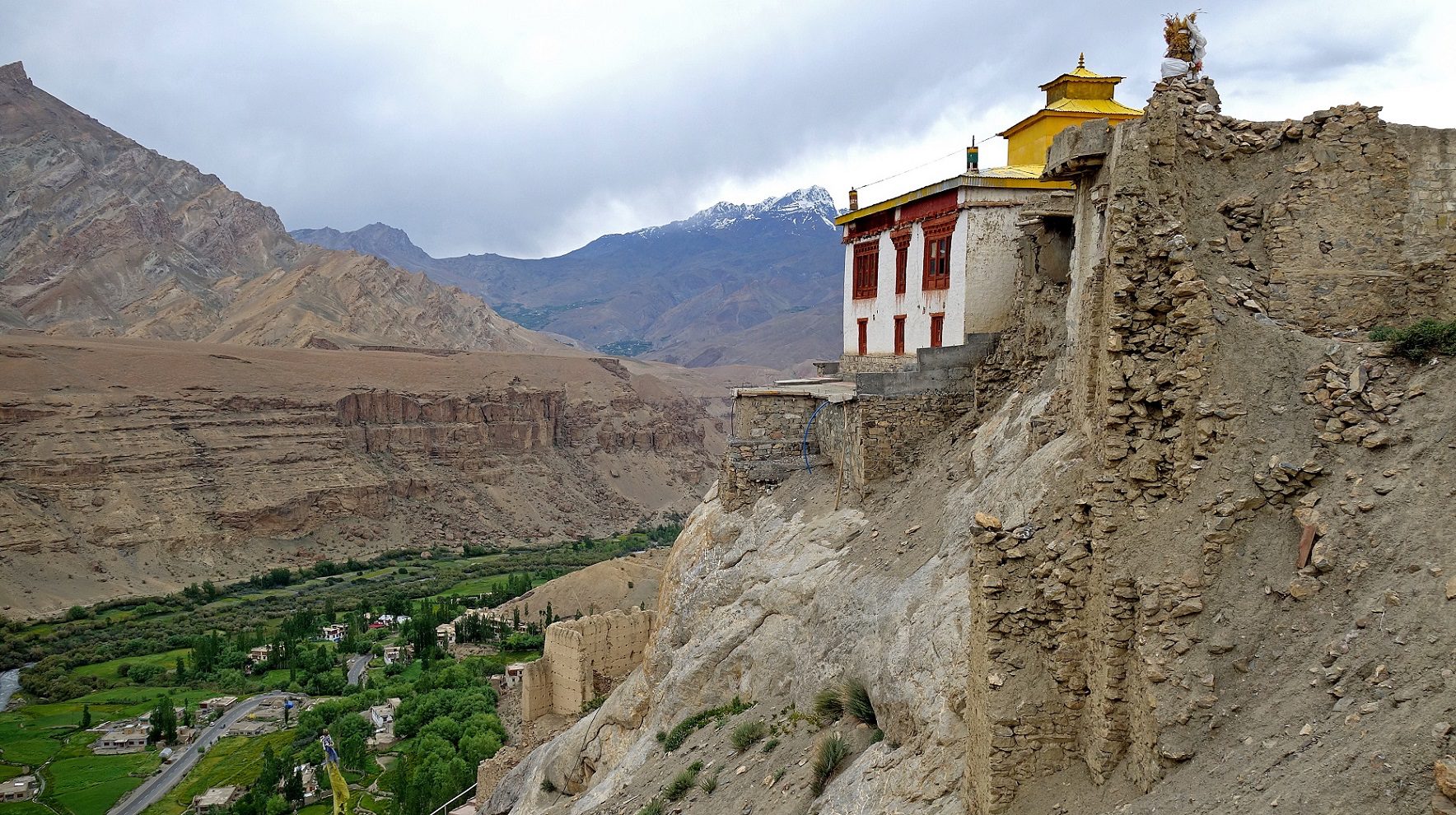
🙏 Why Mulbekh is a Must-Visit Hidden Gem
In a region renowned for its dramatic landscapes and iconic monasteries, it’s easy for travelers to overlook the quiet beauty of Mulbekh. But for those who choose to slow down and look more closely, this small village on the Leh–Kargil highway reveals itself as one of Ladakh’s true hidden gems. Mulbekh is not just a stopover—it’s a destination in its own right, offering depth, silence, and timeless presence.
What makes Mulbekh so special is the way it balances accessibility with authenticity. Located directly on the highway, it is incredibly easy to visit. Yet it has managed to avoid the kind of mass tourism that has touched many of Ladakh’s more famous gompas and trekking destinations. Here, you can still hear the wind rustling through prayer flags, or the soft chants of monks rising from hilltop monasteries, without the sound of tourist chatter in the background.
The Giant Maitreya Buddha carved into the cliffside is unlike anything else in the region. Neither locked behind monastery walls nor surrounded by souvenir shops, it stands quietly above the road, dignified and serene. This accessibility—combined with its ancient spiritual gravity—makes it one of the most underrated Buddhist sites in Ladakh. Few travelers realize that this statue predates many of Ladakh’s most visited monasteries by centuries.
Beyond the Maitreya, the hilltop monasteries offer a powerful contrast to the often grandiose gompas elsewhere in the Himalayas. These are humble spaces, still alive with practice and community spirit. They are places where children study Buddhist philosophy, where rituals are conducted by candlelight, and where the line between the sacred and the everyday blurs beautifully.
Mulbekh is also a gem for photographers and cultural enthusiasts. The rock textures, earthy tones, and dramatic sky provide a painterly setting for landscapes. Meanwhile, the warm hospitality of villagers—unforced and genuine—offers a glimpse into Ladakhi life that is becoming harder to find in the more touristed areas.
In a world obsessed with bucket lists and social media hotspots, Mulbekh reminds us why we travel in the first place: not just to see, but to feel. It invites us to pause, to listen, to witness something that hasn’t changed in generations. This is offbeat Ladakh at its finest—raw, spiritual, and unforgettable.
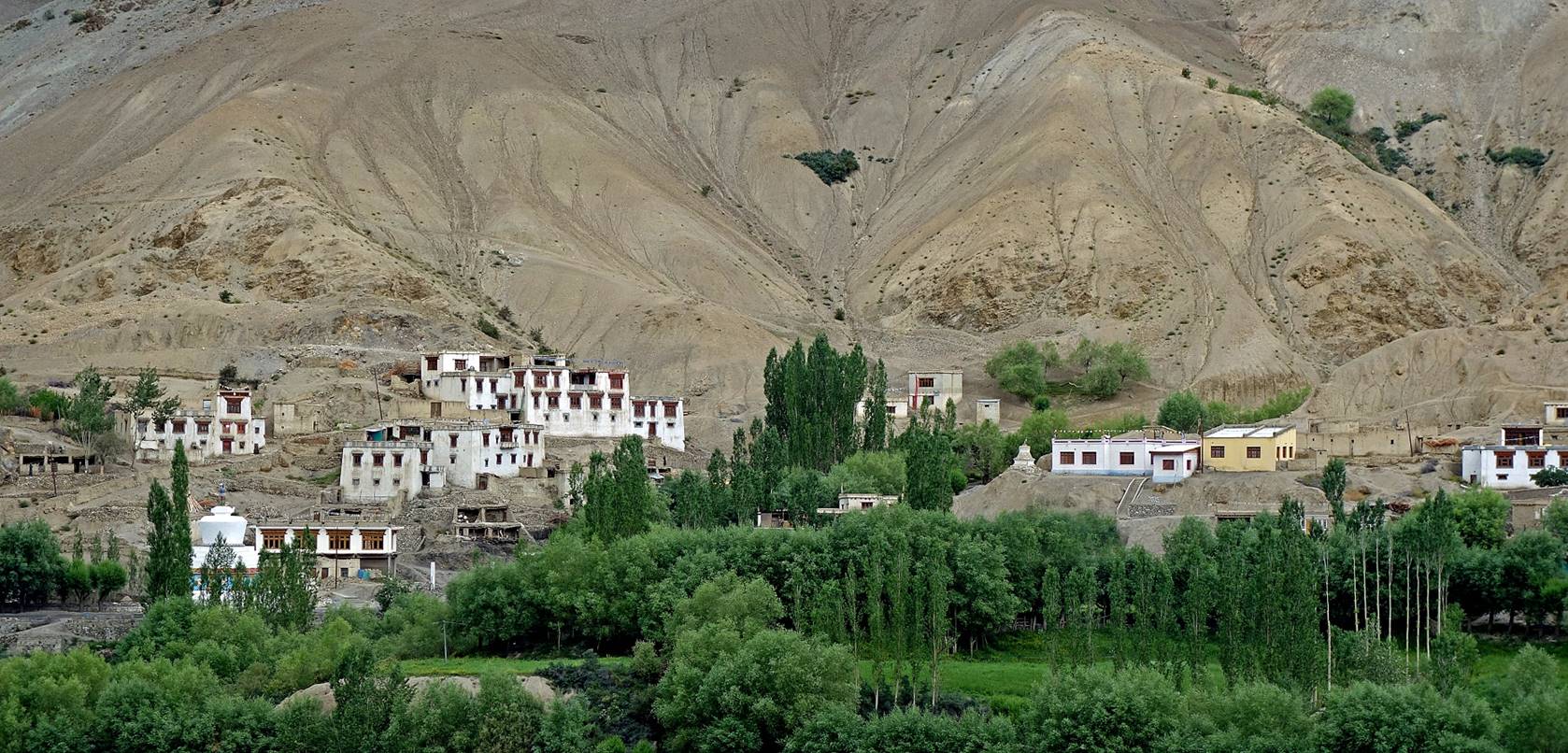
🧭 Suggested Itinerary: Day Trip from Kargil or Stopover from Leh
If you’re short on time but still want to experience the spiritual and visual wonders of Mulbekh, a carefully planned itinerary can make your visit both efficient and enriching. Thanks to its location on the Leh–Kargil highway, Mulbekh is ideally suited for either a quick stopover or a dedicated day trip from Kargil.
Option 1: Stopover from Leh to Kargil (or vice versa)
Many travelers pass through Mulbekh on their way between Leh and Kargil. It’s the perfect midway break after 3–4 hours of driving from either side. Arriving from Leh, you’ll descend through dramatic mountain passes, cross remote army camps, and enter the Mulbekh valley, where the landscape opens and the Giant Maitreya statue comes into view, facing the road. Stop here for 1–2 hours to:
- Admire the rock-carved Maitreya Buddha up close
- Climb to the hilltop monasteries for panoramic views
- Enjoy tea or a simple Ladakhi meal at a local guesthouse
- Walk through the village lanes and interact with locals
Option 2: Full-Day Trip from Kargil
If you’re based in Kargil and wish to explore offbeat spiritual sites, Mulbekh makes an ideal destination. The journey takes about 1.5 hours each way and the road is smooth and scenic. You can leave after breakfast and return before sunset. A sample itinerary might look like this:
- 08:00 AM: Depart Kargil by private car or shared taxi
- 09:30 AM: Arrive in Mulbekh, visit Maitreya Buddha statue
- 10:30 AM: Hike up to the Drukpa and Gelugpa monasteries
- 12:30 PM: Lunch at a local guesthouse or picnic by the stream
- 02:00 PM: Short walk through village fields and prayer walls
- 03:30 PM: Begin drive back to Kargil
Travel Tips:
• Start early to avoid traffic and maximize daylight for photos.
• Bring water, snacks, sunscreen, and a light jacket—even in summer.
• Let your driver know in advance if you plan to spend more than 2 hours here.
Whether you’re just passing through or making a special detour, this suggested itinerary ensures you don’t miss the essence of Mulbekh Village: its quiet majesty, its spiritual energy, and its timeless charm nestled between the mountains.
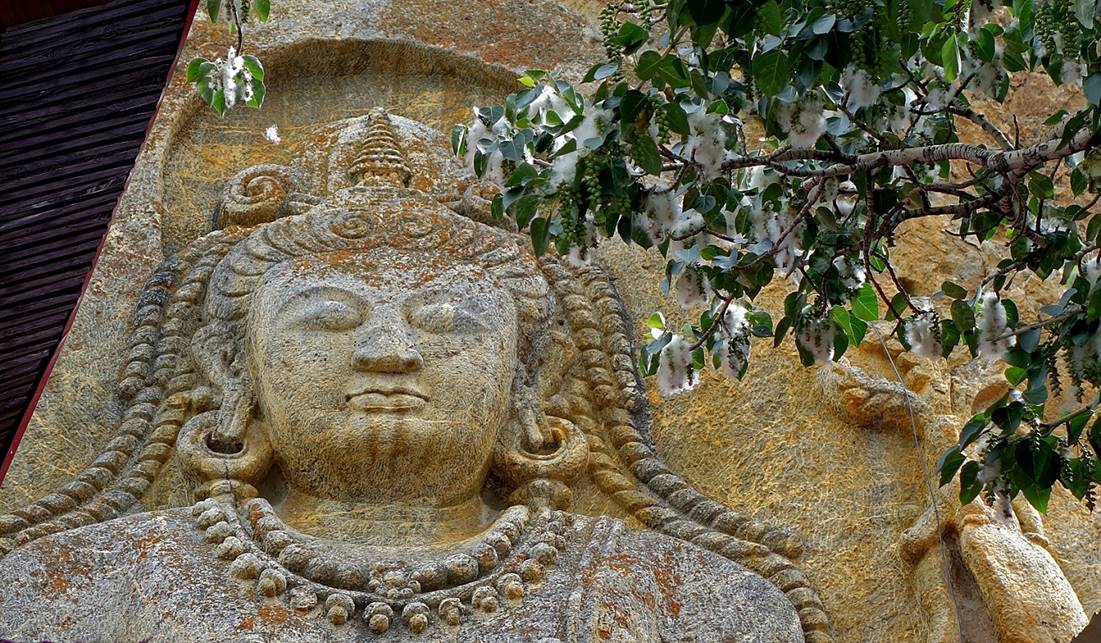
📖 Final Thoughts & Practical Resources
As you leave Mulbekh and continue your journey through Ladakh, you may find that this small village lingers in your memory more than the larger, more famous destinations. Perhaps it’s the serenity of the hilltop monasteries, or the ancient gaze of the Maitreya Buddha carved into stone. Maybe it’s the gentle conversations with locals, or the smell of juniper incense drifting through the wind. Whatever it is, Mulbekh leaves an imprint—not through spectacle, but through stillness.
For those seeking a more meaningful journey in Ladakh, this village is a reminder of the value of slowing down. It shows that even along a well-traveled highway, there are corners of wonder waiting for those who look closely. Whether you’re a spiritual pilgrim, a cultural traveler, or simply someone craving quiet beauty, Mulbekh rewards presence over planning.
Nearby Attractions:
If you’re planning to continue your journey, consider stopping at Wakha Village just a few kilometers ahead, known for its picturesque landscape and traditional houses. Further east lies the dramatic Lamayuru Monastery, often dubbed the “Moonland” of Ladakh due to its surreal terrain. Heading west, Kargil offers opportunities for cultural experiences, historical insight, and access to the Suru Valley.
Travel Responsibly:
Ladakh’s fragile ecosystem and spiritual heritage depend on respectful and mindful tourism. When visiting Mulbekh:
- Carry your waste with you and avoid single-use plastics
- Dress modestly, especially near monasteries and prayer spaces
- Ask before photographing people or religious ceremonies
- Support local businesses, homestays, and guides where possible
Practical Resources:
• No permits are required to visit Mulbekh
• Phone connectivity is limited; Airtel and BSNL work best
• There are no ATMs—carry cash
• Guesthouses and tea stalls are available seasonally (May–October)
• Guided village walks can be arranged informally through locals or guesthouse owners
In the end, Mulbekh offers more than a destination—it offers an experience. One that speaks softly, unfolds slowly, and stays with you long after the prayer flags fade into the rearview mirror. Let it be not just a stop on your itinerary, but a chapter in your journey—one of reflection, discovery, and connection with the soul of Ladakh.

